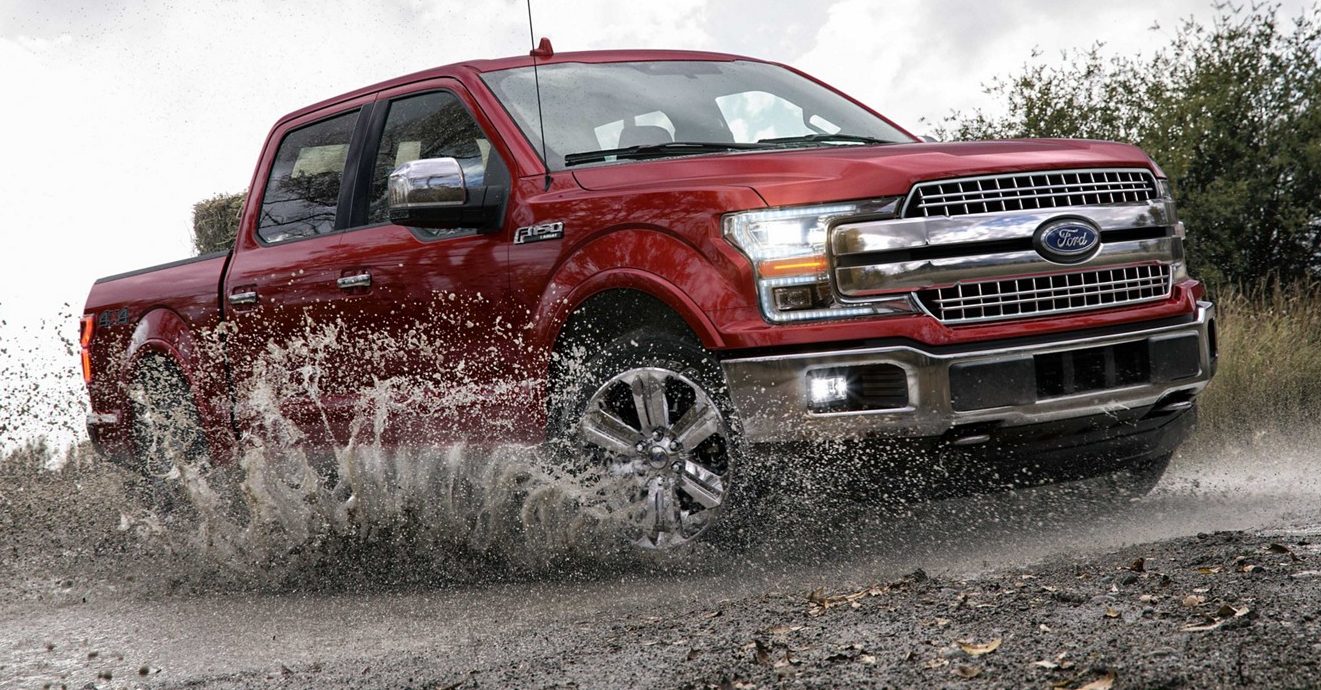

News
Ford F-150 Electric’s edge against rivals like the Tesla Cybertruck may be a gas generator
The pickup truck segment is about to be disrupted by all-electric vehicles, with veterans like Ford and General Motors and younger companies like Tesla and Rivian preparing their respective entries into what could very well be a lucrative market. Amidst this budding competition, each company seems to be making the necessary preparations to ensure that their vehicle has key advantages over the competition.
Tesla seems to be relying on its pedigree as an experienced electric vehicle manufacturer, with the Cybertruck boasting specs that are nothing short of insane at its price point. This is on top of an ever-growing Supercharger Network that’s capable of charging the steel beast at rapid speeds. Rivian, on the other hand, seems to be leaning heavily on the luxury adventure market, with its vehicles boasting clever features that are designed to delight those who love the outdoors. Ford, for its part, appears to be going on a rather interesting route.
A recent patent from the veteran hints at what could very well be Ford’s strategy to ensure that customers of its all-electric truck would not experience concerns about the vehicle’s range. While Rivian’s patents tease an auxiliary battery that could extend range, and while Tesla will no doubt push the Cybertruck’s range as far as it could go through its battery innovations, Ford appears to have opted for something much simpler: a gas generator.
Ford’s patent shows a concept for a portable generator that could be fitted into an all-electric pickup truck. The generator is actually pretty sleek, with the unit being designed to look like a toolbox. As noted by the veteran carmaker, high-voltage battery packs typically provide only a limited amount of electric-only driving range. Thus, it is pertinent to provide a way for customers to add electric-only driving range to their vehicles. A generator addresses this need.
Ford’s generator will not be just an off-the-shelf unit, either. The patent states that all of the generator-related components, from the engine to the fuel to the hookup to the vehicle’s power system, would be contained in a unit that could be fitted and removed from the truck as necessary. This generator could then be utilized to charge the vehicle’s battery pack, among other uses. Ford outlines its idea in the section below.
“The electrified vehicle may be operable to travel over a specific distance prior to energy depletion of the battery pack, which may lead to operator range anxiety. Accordingly, the electrified vehicle may additionally be equipped with a generator for increasing the travel range of the electrified vehicle. Like the battery pack, the generator may be operably connected to the electric machine through the inverter over the voltage bus. The generator may also be connected in either parallel or series relative to the battery pack,” Ford’s patent noted.
Of course, using a gas-powered generator in an all-electric truck kind of defeats the purpose of a zero-emissions vehicle, but there is no denying that longtime Ford owners will likely be more open to the F-150 Electric if such a feature is available. Ultimately, after all, every Ford F-150 Electric that is sold is one less traditional, gas-guzzling F-150 on the streets. And that, in the grand scheme of things, matters a lot, at least to a certain degree.
Read Ford’s gas generator patent for its electric pickup below.
Ford F150 EV Range Extender Patent by Simon Alvarez on Scribd

News
Tesla FSD fleet is nearing 7 billion total miles, including 2.5 billion city miles
As can be seen on Tesla’s official FSD webpage, vehicles equipped with the system have now navigated over 6.99 billion miles.

Tesla’s Full Self-Driving (Supervised) fleet is closing in on almost 7 billion total miles driven, as per data posted by the company on its official FSD webpage.
These figures hint at the massive scale of data fueling Tesla’s rapid FSD improvements, which have been quite notable as of late.
FSD mileage milestones
As can be seen on Tesla’s official FSD webpage, vehicles equipped with the system have now navigated over 6.99 billion miles. Tesla owner and avid FSD tester Whole Mars Catalog also shared a screenshot indicating that from the nearly 7 billion miles traveled by the FSD fleet, more than 2.5 billion miles were driven inside cities.
City miles are particularly valuable for complex urban scenarios like unprotected turns, pedestrian interactions, and traffic lights. This is also the difference-maker for FSD, as only complex solutions, such as Waymo’s self-driving taxis, operate similarly on inner-city streets. And even then, incidents such as the San Francisco blackouts have proven challenging for sensor-rich vehicles like Waymos.
Tesla’s data edge
Tesla has a number of advantages in the autonomous vehicle sector, one of which is the size of its fleet and the number of vehicles training FSD on real-world roads. Tesla’s nearly 7 billion FSD miles then allow the company to roll out updates that make its vehicles behave like they are being driven by experienced drivers, even if they are operating on their own.
So notable are Tesla’s improvements to FSD that NVIDIA Director of Robotics Jim Fan, after experiencing FSD v14, noted that the system is the first AI that passes what he described as a “Physical Turing Test.”
“Despite knowing exactly how robot learning works, I still find it magical watching the steering wheel turn by itself. First it feels surreal, next it becomes routine. Then, like the smartphone, taking it away actively hurts. This is how humanity gets rewired and glued to god-like technologies,” Fan wrote in a post on X.
News
Tesla starts showing how FSD will change lives in Europe
Local officials tested the system on narrow country roads and were impressed by FSD’s smooth, human-like driving, with some calling the service a game-changer for everyday life in areas that are far from urban centers.

Tesla has launched Europe’s first public shuttle service using Full Self-Driving (Supervised) in the rural Eifelkreis Bitburg-Prüm region of Germany, demonstrating how the technology can restore independence and mobility for people who struggle with limited transport options.
Local officials tested the system on narrow country roads and were impressed by FSD’s smooth, human-like driving, with some calling the service a game-changer for everyday life in areas that are far from urban centers.
Officials see real impact on rural residents
Arzfeld Mayor Johannes Kuhl and District Administrator Andreas Kruppert personally tested the Tesla shuttle service. This allowed them to see just how well FSD navigated winding lanes and rural roads confidently. Kruppert said, “Autonomous driving sounds like science fiction to many, but we simply see here that it works totally well in rural regions too.” Kuhl, for his part, also noted that FSD “feels like a very experienced driver.”
The pilot complements the area’s “Citizen Bus” program, which provides on-demand rides for elderly residents who can no longer drive themselves. Tesla Europe shared a video of a demonstration of the service, highlighting how FSD gives people their freedom back, even in places where public transport is not as prevalent.
What the Ministry for Economic Affairs and Transport says
Rhineland-Palatinate’s Minister Daniela Schmitt supported the project, praising the collaboration that made this “first of its kind in Europe” possible. As per the ministry, the rural rollout for the service shows FSD’s potential beyond major cities, and it delivers tangible benefits like grocery runs, doctor visits, and social connections for isolated residents.
“Reliable and flexible mobility is especially vital in rural areas. With the launch of a shuttle service using self-driving vehicles (FSD supervised) by Tesla in the Eifelkreis Bitburg-Prüm, an innovative pilot project is now getting underway that complements local community bus services. It is the first project of its kind in Europe.
“The result is a real gain for rural mobility: greater accessibility, more flexibility and tangible benefits for everyday life. A strong signal for innovation, cooperation and future-oriented mobility beyond urban centers,” the ministry wrote in a LinkedIn post.
News
Tesla China quietly posts Robotaxi-related job listing
Tesla China is currently seeking a Low Voltage Electrical Engineer to work on circuit board design for the company’s autonomous vehicles.

Tesla has posted a new job listing in Shanghai explicitly tied to its Robotaxi program, fueling speculation that the company is preparing to launch its dedicated autonomous ride-hailing service in China.
As noted in the listing, Tesla China is currently seeking a Low Voltage Electrical Engineer to work on circuit board design for the company’s autonomous vehicles.
Robotaxi-specific role
The listing, which was shared on social media platform X by industry watcher @tslaming, suggested that Tesla China is looking to fill the role urgently. The job listing itself specifically mentions that the person hired for the role will be working on the Low Voltage Hardware team, which would design the circuit boards that would serve as the nervous system of the Robotaxi.
Key tasks for the role, as indicated in the job listing, include collaboration with PCB layout, firmware, mechanical, program management, and validation teams, among other responsibilities. The role is based in Shanghai.
China Robotaxi launch
China represents a massive potential market for robotaxis, with its dense urban centers and supportive policies in select cities. Tesla has limited permission to roll out FSD in the country, though despite this, its vehicles have been hailed as among the best in the market when it comes to autonomous features. So far, at least, it appears that China supports Tesla’s FSD and Robotaxi rollout.
This was hinted at in November, when Tesla brought the Cybercab to the 8th China International Import Expo (CIIE) in Shanghai, marking the first time that the autonomous two-seater was brought to the Asia-Pacific region. The vehicle, despite not having a release date in China, received a significant amount of interest among the event’s attendees.








